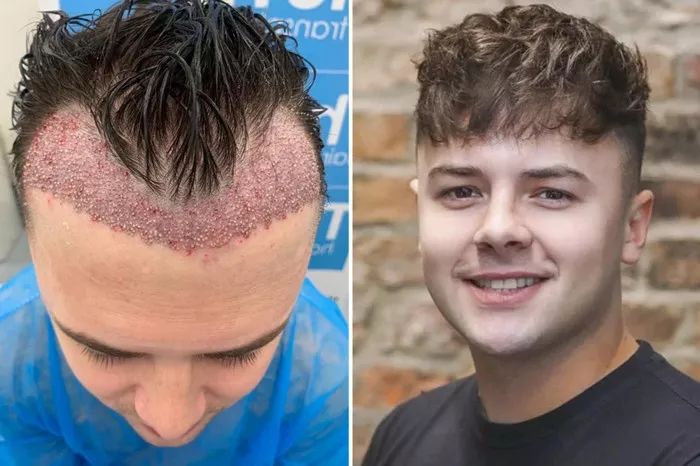Hair loss is a common concern that affects millions of individuals worldwide, often leading to a quest for effective solutions. Among these, hair transplants have gained considerable popularity for their potential to restore a full head of hair. However, many people wonder: is there a point at which a hair transplant is no longer viable? This article delves into the factors that determine whether it’s too late for a hair transplant and provides essential insights into the hair restoration journey.
Understanding Hair Transplants
1. What Is a Hair Transplant?
A hair transplant is a surgical procedure that involves relocating hair follicles from a donor site (usually the back or sides of the scalp) to areas experiencing hair loss. The two primary methods are Follicular Unit Extraction (FUE) and Strip Harvesting, both designed to achieve natural-looking results.
2. Historical Context
Hair transplant techniques have evolved significantly since their inception in the 1930s. Early methods resulted in unnatural appearances, but advancements in technology and surgical techniques have made contemporary hair transplants far more effective.
Signs of Hair Loss
1. Patterns of Hair Loss
Understanding your hair loss pattern is crucial. Common types include:
Androgenetic Alopecia: Often referred to as male or female pattern baldness, this hereditary condition leads to gradual thinning of hair.
Alopecia Areata: An autoimmune disorder causing sudden hair loss in patches.
Telogen Effluvium: Temporary hair loss triggered by stress, hormonal changes, or medical conditions.
2. Assessing the Severity
Tools like the Norwood scale (for men) and the Ludwig scale (for women) help gauge the extent of hair loss. Understanding your classification can aid in determining the feasibility of a hair transplant.
Ideal Candidates for Hair Transplants
1. Age Considerations
While there is no strict age limit for hair transplants, younger individuals (under 25) are often advised to wait. Hair loss patterns can change significantly in the years following adolescence. Performing a transplant too early may lead to unsatisfactory results as hair loss progresses.
2. Hair Loss Stability
Candidates should ideally have stable hair loss for at least a year. A stable pattern allows for more accurate planning of the transplant, ensuring that the newly transplanted hair has a solid foundation.
3. Overall Health
Good health is essential for any surgical procedure. Candidates should discuss their medical history with a specialist to evaluate any potential complications.
Factors to Consider: When Is It Too Late?
1. Advanced Hair Loss
As hair loss progresses, the donor area may become insufficient to provide enough hair follicles for a successful transplant. If a person has lost a significant amount of hair or is completely bald in the donor area, they may no longer be suitable candidates for a transplant.
2. Age-Related Changes
Aging can affect hair quality and scalp condition. As people age, the hair follicles may become thinner, making it harder to achieve the desired density. If an individual is significantly older, the likelihood of achieving optimal results diminishes.
3. Scarring and Skin Condition
Conditions like scarring alopecia or significant scarring from previous surgeries can complicate the transplantation process. The health of the scalp is crucial; unhealthy or scarred skin may hinder the success of the procedure.
4. Emotional and Psychological Readiness
It’s essential for candidates to be emotionally prepared for a hair transplant. Individuals who are in a state of denial or extreme distress about their hair loss may not be ideal candidates, as they may have unrealistic expectations regarding the outcomes.
Alternatives to Hair Transplants
If it is determined that a hair transplant may not be suitable, several alternatives exist:
1. Non-Surgical Treatments
Minoxidil: A topical treatment that can help promote hair growth and slow down hair loss.
Finasteride: An oral medication that can prevent hair loss in men by inhibiting hormone levels that contribute to baldness.
2. Hair Restoration Products
Wigs and hairpieces can provide immediate coverage without surgical intervention. Modern options offer a natural look and can be customized to match the individual’s hair color and texture.
3. Platelet-Rich Plasma (PRP) Therapy
This non-invasive treatment involves injecting the patient’s own platelets into the scalp to stimulate hair growth. While it may not provide the same results as a transplant, PRP therapy can enhance the overall health of existing hair.
Making the Decision: Consultation with a Specialist
1. Importance of Professional Guidance
Consulting with a qualified hair restoration specialist is crucial in making an informed decision. A specialist can assess individual circumstances, offer guidance, and develop a personalized plan.
2. Evaluating Options
During the consultation, patients should discuss all available options, including potential risks, benefits, and expected outcomes.
The Future of Hair Restoration
1. Technological Advancements
As technology evolves, new techniques and treatments continue to emerge in the field of hair restoration. Research into stem cell therapy and robotic hair transplantation holds promise for improving results and expanding the pool of suitable candidates.
2. Changing Attitudes Toward Hair Loss
Societal perceptions of hair loss are gradually shifting, with more individuals embracing their natural appearance. This evolving mindset may influence decisions regarding hair restoration.
Conclusion
While hair transplants offer a viable solution for many individuals experiencing hair loss, determining the right time to undergo the procedure is crucial. Factors such as the stability of hair loss, age, and overall health play significant roles in this decision. For those who may find it too late for a transplant, numerous alternatives exist that can help manage hair loss effectively. Ultimately, consulting with a qualified specialist is the best way to assess options and make informed decisions about hair restoration. By understanding the nuances of hair loss and restoration, individuals can confidently navigate their journey toward fuller hair and renewed confidence.
Related topics:
- Non-Surgical Hair Replacement: A Comprehensive Guide
- What Is a Long Hair Transplant? A Comprehensive Overview
- FUE vs. FUT Hair Transplant: Understanding Your Options


